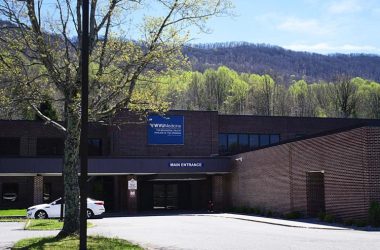By KEN WARD JR.
Charleston Gazette-Mail
LOGAN, W.Va. — West Virginia environmental groups on Tuesday urged a National Academy of Sciences panel to look carefully at the public health impact of strip mining, saying they hope more scrutiny of the issue will lead to a ban on the practice.

(Gazette-Mail file photo)
“We have a serious health problem here,” said Vernon Haltom, executive director of the group Coal River Mountain Watch. “I hope we are going to end this process, not just kick it down the road.”
Tuesday’s meeting is part of an effort by an 11-member committee from various fields — ranging from epidemiologists to mining engineers and medical experts to regulatory decision-makers — to examine existing studies, identify research gaps and look for “new approaches to safeguard the health of residents living near these types of coal-mining operations,” according to the project’s study plan.
The national scientific review follows a series of more than two-dozen peer-reviewed papers — mostly led by former West Virginia University researcher Michael Hendryx — that raised serious questions about increased risk of cancer, birth defects and premature death among coalfield residents living near large-scale surface coal-mining operations.
The effort to examine mountaintop removal’s public health effects comes after then-West Virginia Department of Environmental Protection Secretary Randy Huffman surprised citizen groups in March 2015 — on the eve of a protest planned at his agency’s headquarters — by publicly saying that the health studies needed to be more closely examined by regulators, and the commitment less than a week later by Huffman and state Public Health Commissioner Dr. Rahul Gupta for a review of the issue.
After Huffman and Gupta asked the U.S. Department of Interior for help on the issue, Interior’s Office of Surface Mining Reclamation and Enforcement provided $1 million to fund the National Academy of Sciences study.
The project was announced in August 2016 and funding was in place before the Donald Trump administration — which has promised to roll back regulations on the coal industry — took office.
West Virginia political and governmental leaders have mostly either ignored the growing body of science on mountaintop removal’s health effects or tried to belittle the work. Coal industry officials have, likewise, attacked the studies, funding a large effort to discredit the work.
Jason Bostic, a vice president of the West Virginia Coal Association, stayed mostly away from discussion of the health studies when he addressed the National Academy panel Tuesday. Instead, Bostic said the huge drop in state coal production over the past few years is a major cause of the West Virginia state government budget crisis that panel members might have read about in the local papers during their visit to the coalfields.
“The coal industry is the only economic force of any consequence in these communities,” Bostic said. “And the coal industry is the broad-shouldered Atlas of the state’s economy.”
Bostic did say that he believes public health problems in the region are more complicated than mining opponents are portraying them, and that the downturn in the local coal economy certainly doesn’t help provide basic health services to mining communities. But he said surface mining has taken a particularly hard hit and “large-scale mountaintop removal operations … are a thing of the past.”
In mountaintop removal, or strip mining, entire ridges are blasted apart with explosives to uncover valuable coal seams underneath. Leftover rock and dirt is shoved into nearby valleys, burying streams. Scientists have increasingly warned that the practice has damaged rich Appalachian forests, buried hundreds of miles of streams and severely damaged downstream water quality.
Cindy Rank, mining chairwoman for the West Virginia Highlands Conservancy, told the National Academy panel that an earlier study of mountaintop removal’s environmental effects — conducted as a result of a citizen group lawsuit and published in the mid-2000s — should have provided an early warning of the human health effects that more recent research has found.
“It should have been a red flag,” Rank said. “These bugs are dying, the fish are deformed. Is anything happening to the people?”
West Virginia Department of Environmental Protection officials who spoke at Tuesday’s meeting had few clear answers for detailed questions from the National Academy panel.
When panelists would ask what sorts of pollutants the DEP sampled for near mining sites, agency officials would respond that it depended on which mining sites the panel’s scientists were specifically asking about. DEP officials provided an overview of the basic laws the agency enforces, but repeatedly said they would need a clearer explanation of what the panel was trying to find out before they could give more specifics about monitoring, citizen complaints or enforcement efforts.
Russ Hunter, a lawyer with the DEP’s Division of Mining and Reclamation, told the panel that agency officials couldn’t readily provide the National Academy with data about how many complaints the state had received about things like blasting from coal mines. Hunter also said the DEP hasn’t really performed any sort of in-depth examination of how strip mining affects public health of nearby communities.
“There is no quantification of any type of health impacts or speculation as to what those may be,” Hunter said.
Tim Carroll, of the DEP’s Division of Air Quality, said the agency has a statewide network of 21 or 22 air-monitoring stations, but only when pressed did Carroll explain that those stations monitor only certain pollutants, and not necessarily the same ones that might be a concern for residents near strip mining operations.
Eventually, Carroll was specifically asked for information about the locations of those monitoring stations, relative to strip mine sites. He said the DEP had a station in Beckley, but closed it in 2015. Asked how close that location was to a strip mine operation, Carroll said, “I don’t know.”
See more from the Charleston Gazette-Mail




